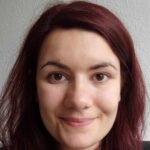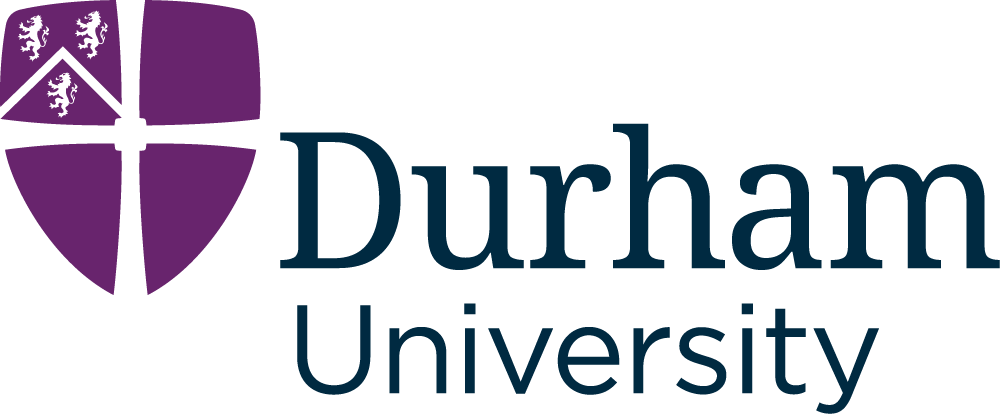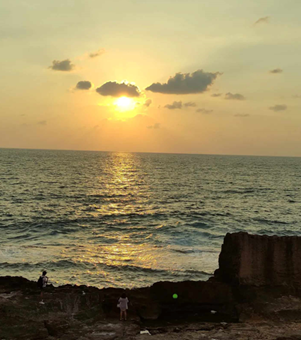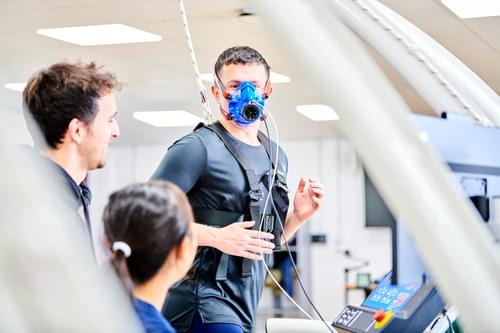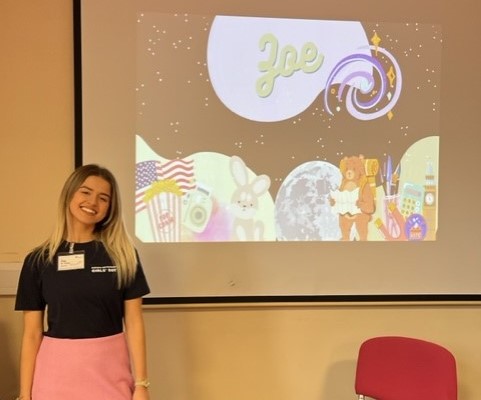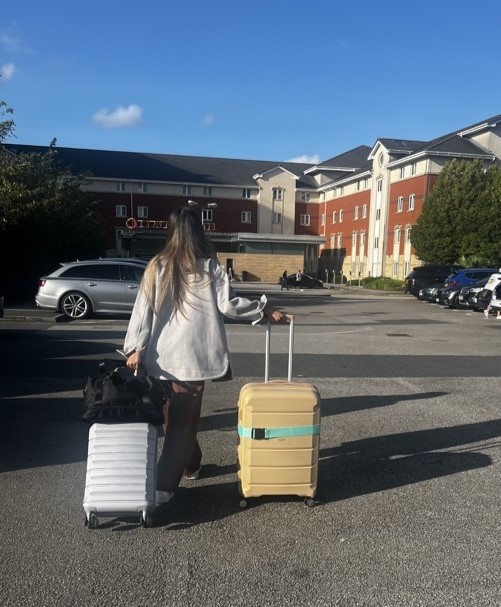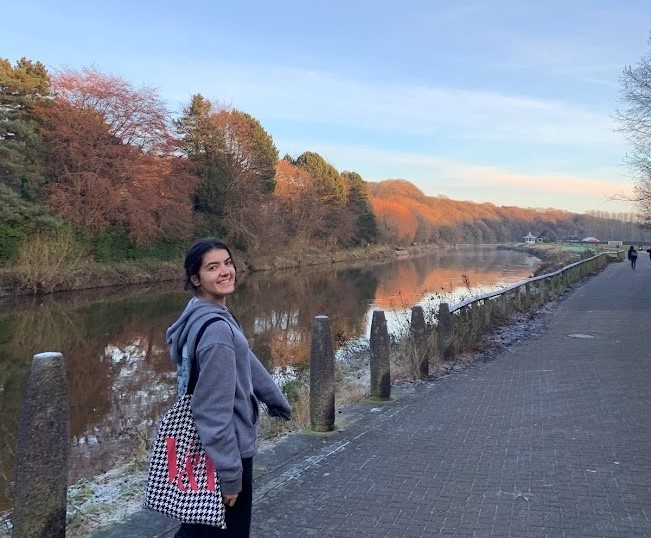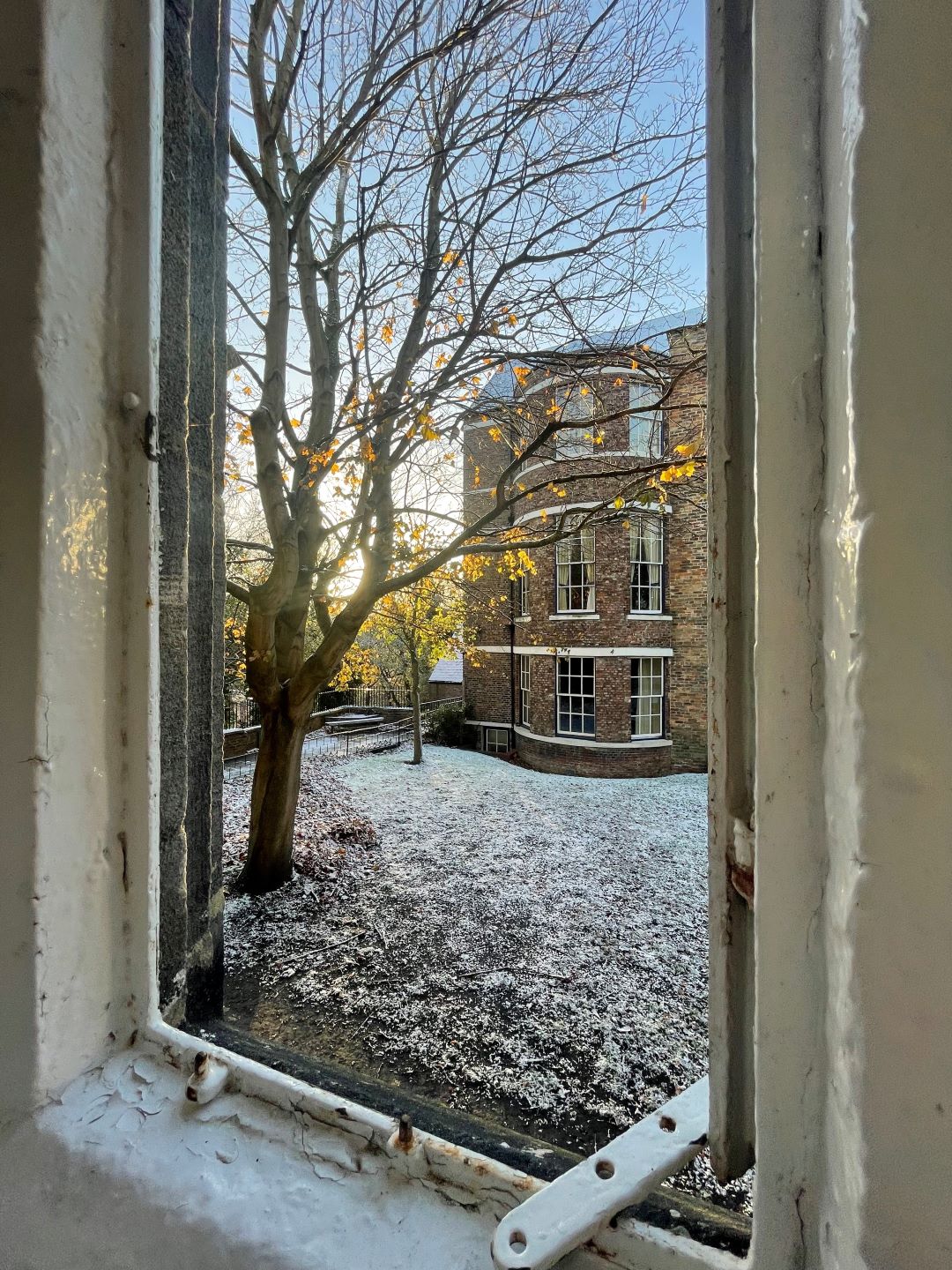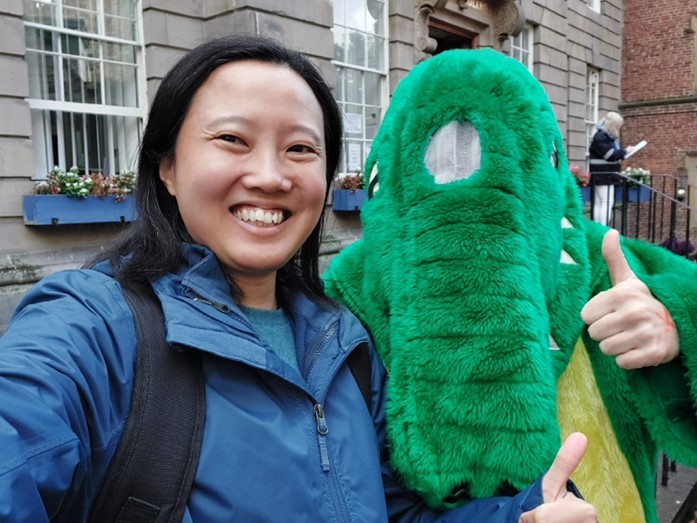Blue Mediterranean waters, cedar-covered mountains, lemon trees across the coastline and the warm smell of freshly made coffee with cardamon in the air.
As part of my PhD placement, I was lucky enough to have visited and worked in this idyllic environment twice. Last year I’ve had the opportunity to work on my supervisors’ project in Tell Koubba, a collaboration with the American University of Beirut, during the excavation season, and just this past September I returned for a study season in Beirut.
The excavation season
The team was located in the small town of Chekka, at a hotel overlooking the Mediterranean on one side and the green Lebanese mountains on the other – a varying landscape that has allowed people to settle and flourish throughout millennia.
It’s hard to describe to anyone who has no archaeological experience the unique excitement you have on your first day on a new dig. Once on site, you hurriedly take the final sip of your coffee and you’re ready to dive in.
On this last season, the excavation was focused on Tell Koubba II, which is mainly consisted of material dating to the Early Bronze Age III. Four complete large vats had already been uncovered, in a building contemporary to the latest phase of a large monumental wall (Badreshany & Philip, 2020). After the topsoil was removed and the protective fabric was pulled aside, we got a beautiful view of the magnificent monumental wall (above image).
This year tried to gain a better understanding on the life of the people of the Early Bronze Age Tell Koubba site. Each day, we had something new and exciting coming up, each archaeological context revealing something different: pottery, olive pits, grape seeds, building features, animal bones and so on. The experience was only amplified by the presence of the lovely and welcoming workmen, who offered us the tastiest tea while teaching us Arabic.
It is an unspoken fact that, during an excavation, the most interesting finds are revealed in the last days of the season, which is what happened that year as well. In our final days, as the last part of the later phase of the monumental wall was removed, a beautiful axe emerged, that was waiting there for a few thousand years. Every single person on site burst with enthusiasm, as this constituted a unique find for the site so far. However, as a pottery-oriented person myself, I have to admit that my personal favourite finds of the season were the sherds of a beautiful, combed vessel that if put together could be almost completely reconstructed.

The study season
During this year’s study season, the team visited the vibrant capital of Beirut, since the material of the excavation is stored at the American University of Beirut. I had the chance to assist the project’s ceramic specialist and work with the same pottery we had excavated last year.
This time, I was able to have a closer look on the pottery; shapes, decoration, forming technique (if visible), all characteristics that could potentially help an archaeologist shed some light into Early Bronze Age societies. It never fails to thrill me that these sherds of pottery that I now hold in my hands were manufactured by someone around 5000 years ago. A person decided to produce a specific form of vessel, use specific or random minerals and rocks in the clay, maybe combe its exterior (or interior) surface, or paint it, firing it in controlled conditions, and so on. All these thrilling facts were the subject of discussion countless times with various fascinated students of AUB, often dropping by for a chat on their way to their lectures.
On both of these fieldtrips, we also had the opportunity to visit other sites, like Byblos, different towns, such as Batroun, or just wander around the city of Beirut, taste the delicious local cuisine and visit the archaeological museum and the lively market. Lebanon, this vibrant and colourful country with the welcoming people and the gorgeous landscape, has the unique trait, to always make you feel like you’re at home.

Even though my personal research focuses on the Early Bronze Age in Jordan Valley, my participation in the excavation and the study season allowed me to gain some experience on the Early Bronze Age of a different part of the wider Levant region that presents interestingly different characteristics and offers a great starting point for comparing the development of each sub-region of the Levant during the EBA.
As a final remark, just take this: if you have the chance to visit Lebanon for fieldwork, I urge you to just go for it! Apart from all the valuable skills you will gain, it will most definitely be an incredible, unforgettable experience.
Discover more
Our Department of Archaeology is a leading centre for the study of geoarchaeology
and is ranked 10th in the QS World University Rankings by Subject 2023.
We are an inclusive, vibrant and international community. Our students develop knowledge and gain essential and transferable skills through research-led teaching and lab-based training.
Feeling inspired? Visit our Archaeology webpages to learn more about our postgraduate and undergraduate programmes.
Durham University is a top 100 world university. In the QS World University Rankings 2024, we were ranked 78th globally.
